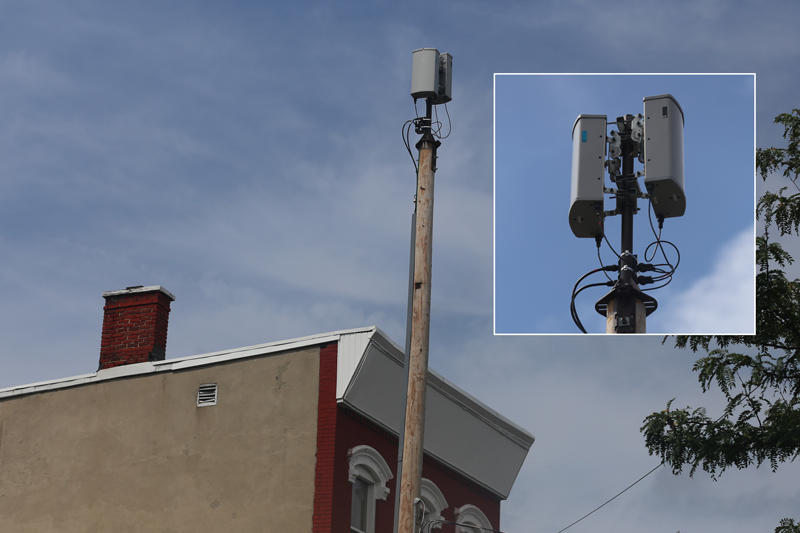Philipstown board also hears claims of health risks
Hot on the heels of a vote to settle a lawsuit over a cell tower, the Nelsonville Village Board intends to take up another potentially fraught topic: Controlling 5G technology installations, the smaller successors to massive towers.
The board distributed copies of a draft law in early January and this week scheduled a public hearing for Feb. 18.
On Jan. 9, the Philipstown Town Board likewise signaled its interest in 5G by hearing a presentation from an environmental health activist who warned of dangers from the burgeoning technology.
(In Beacon, the City Council in 2018 adopted a law requiring a special-use permit to install small-cell wireless units on poles more than 50 feet high, within 20 feet of a home, or with equipment less than 15 feet from the ground.)
Under Nelsonville’s draft law, installers of small wireless telecommunications facilities (SWTF), including 5G, would need a permit from the Planning Board and the Village Board would have to authorize installations on village-owned sites. The Planning Board could require camouflaging of the unit to reduce intrusiveness. In some cases, as with distributed-antenna systems, the law would require a more rigorous special-use permit and building permit.
The draft states that applicants would be required to provide evidence that demonstrates the need for the antennas and structures and justify their heights. In residential areas, the installations would be banned within 30 feet of a residence.
The installations also could not have “a significant adverse impact on scenic or historic resources.”
Mayor Mike Bowman said on Jan. 8 that “we’re incorporating a lot of things we learned from the last round” of dealing with telecommunications issues.
Philipstown
In a briefing for the Philipstown Town Board on Jan. 9, Ellen Weininger of Grassroots Environmental Education, based in Port Washington, New York, explained that 5G technology relies on hundreds of closely spaced wireless antennas, often placed on streetlamps and utility poles in residential areas. This brings “24/7 exposure” that, unlike an individual’s cell phone, cannot be turned off, she said. “We’ve seen them in people’s front yards and back yards” and near schools.
On its website, her organization claims that the “small, but powerful transmitters” in personal devices, routers, smart meters, direct antenna systems and other wireless innovations “all combine to increase our exposure to wireless radiation,” or radio-frequency radiation.
“Long considered harmless, low-level exposures to this type of radiation are now recognized as capable of damaging DNA, interfering with normal brain development and increasing the risk of certain cancers,” it adds.
Weininger said that 5G is not necessary for connectivity or public safety but is for games, wireless appliances, driverless cars and “layers and layers of applications.”
Federal law restricts municipalities from regulating the technology based on health concerns, and, according to the American Cancer Society, there is no scientific evidence that low-level radio-frequency radiation increases the risk of cancer. The Federal Communications Commission also states on its website that claims of “harmful biological effects” from low-level radio-frequency radiation are “ambiguous and unproven.”

